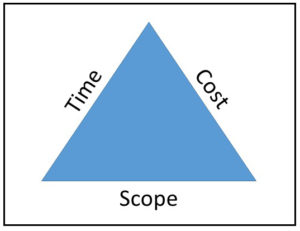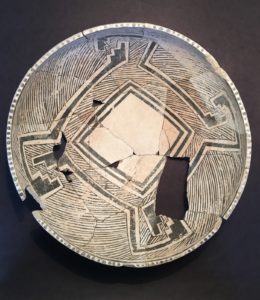Can You (Really) Do Your Proposed Study?
…a deceptively simple question that can be interpreted in several ways.
For purposes of planning your proposed research study, answering the question (read: assessing feasibility) means looking at your idea from three perspectives—scope, cost, and time.
The scope of your project defines your project’s boundaries and outlines its major characteristics. A well thought-out statement of scope contains:
- Your idea and a justification for why you are proposing it,
- A list of the resources your project will need (includes equipment, supplies, space, people, etc.)
- The project’s constraints or limitations, and
- What the project will include and what it will NOT include.
The next logical question is what will your project cost? A rough estimate is sufficient. You will fine-tune costs when you develop the budget. Examples of costs include:
- Personnel (a later blog will discuss ways to predict personnel needs based on your study design),
- Equipment and supplies,
- Obtaining/storing specimens,
- Recruiting and retaining participants,
- Purchasing large sets of data,
- Experimental animals, and
- Lab tests
Here is a checklist of possible cost items for a proposal to the NIH. You will likely include similar items in budgets for proposals to other funding agencies.
The final piece of assessing feasibility is time. Again, a rough estimate is sufficient. How long will completing each major element–e.g., recruiting participants; conducting experiments, tests, interventions; completing interviews–of your research study take (weeks, months)? Can/will you do any or all elements simultaneously (in parallel) or complete one before starting another (in series)? How will the work play out along a time continuum? How much total time (years) will you need to complete the proposed study?
 None of the three feasibility factors is unlimited and each one has implications for the other two. Scope, cost, and time exist in a dynamic relationship, and there is always tension among them. Changing one will affect one or both of the others. Think of a triangle with each side representing one of the factors. If you expand the scope (read: scope creep), time and cost are changed. If your proposal is funded for less than the actual costs, the scope will likely need to change to stay within budget. If you need to compress the time, you may need to add personnel, purchase supplies earlier than planned, or take other actions that will increase the cost.
None of the three feasibility factors is unlimited and each one has implications for the other two. Scope, cost, and time exist in a dynamic relationship, and there is always tension among them. Changing one will affect one or both of the others. Think of a triangle with each side representing one of the factors. If you expand the scope (read: scope creep), time and cost are changed. If your proposal is funded for less than the actual costs, the scope will likely need to change to stay within budget. If you need to compress the time, you may need to add personnel, purchase supplies earlier than planned, or take other actions that will increase the cost.
Assignment designed to help you assess the feasibility of your project:
Imagine you are presenting your project idea to a panel of people who control the $$$. Either write a short document or develop a brief PowerPoint presentation that covers the following areas:
- What is your idea and what is your justification for proposing it? (1 paragraph each, or a single slide with key points)
- How many people will you need and why? (1 short paragraph or a single slide)
- What other resources (big ticket items) will you need? (Short list)
- Your rough estimate of the costs. (Single statement)
- Your best estimate of how much time you will need to complete the work. (Single statement)
Your document should be a single page, or if you choose to do a PowerPoint, it should be no longer than 3 slides. Use your document or your presentation to engage colleagues, co-investigators, experts, mentors, and other stakeholders in a conversation regarding feasibility. Note comments, concerns, and questions, and figure out how you will address them. Iterate until you feel confident your proposal is feasible.
Next Post: Researchers–Start Your Timelines
Previous Posts:






0 Comments